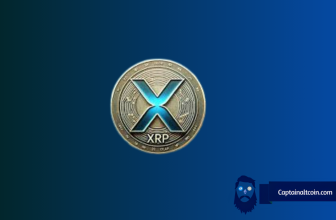
Buoyed up by the new Bitcoin ETFs coming out of Blackrock and Grayscale, the largest digital currency reached a price peak of $74,000 in March. The Bitcoin halving event, which took place on April 19th, was expected to increase the momentum even further, carrying prices higher up into unchartered territory.
The expectation was based on history, or, more specifically, on a small set of historical data the meaning of which is unclear. Following the previous halving in 2020, prices took an upward trajectory for a year, clocking up gains of 559%. After the 2016 event, prices sunk substantially at first but then proceeded to rise by 284% in the space of a year.
The crypto bull run of 2017 carried prices up to $2,506 in July, and then all the way up to $19,000 by the end of that year. And, remembering back to the first Bitcoin halving event in 2012, we saw that prices indeed took the opportunity to climb soon after it was over.
No ironclad causal connection between halving events and Bitcoin bull runs jumps out and meets the eye. Analysts say that the bull runs coming after the events in 2020, 2016, and 2012 were powered by their own unique driving forces, so the contribution of the halving events is hard to determine. On the other side of the fence, there are those who insist Bitcoin halvings really do have the power to set the bulls running all on their own.
But why, in fact, should these events be expected to do so? And, even if they do, what factors could interfere with this dynamic in 2024? If you’re poised to trade Bitcoin in CFD form with iFOREX Europe, or if you’re just a close follower of the crypto industry, join us for some answers.
What you'll learn 👉
The Impact of Halvings on Supply
After halving events take place, the number of new coins emerging into the network through Bitcoin “mining” gets cut in half. Reduced supply and stable demand should, theoretically, push prices upwards. Thus, there seems to be a basis to anticipate price surges on the heels of halving events. “The theory”, explains Michael Dubrovsky of PoWx, “is that there will be less Bitcoin available to buy if miners have less to sell”.
In our case in 2024, there was a particular channel of Bitcoin demand people believed would stay steady: demand for Bitcoin ETFs. According to J.P. Morgan’s Nikolaos Panigirtzoglou, it was the presumption “that Bitcoin demand via spot ETFs would continue at the same pace even as the supply… diminishes” that justified the bullishness surrounding April’s event.
It may turn out, however, that this presumption was simply unwarranted. Blackrock’s new Bitcoin ETF with ticker IBIT brought in $18 billion in the 71 days running up to April 25th, but inflows quickly slowed to a drip after that date, when average daily inflows were already close to zero. Bitcoin prices had, by then, lost a hefty 15% since their March high.
If traders are going to abandon Bitcoin ETFs so soon after their initial burst of interest petered out, the argument for a bull run following this year’s halving appears to fall flat. The immediate market reaction to the halving event on April 19th was, in fact, quite lethargic.
America’s Economy Looking Strong
When April arrived, data from the US manufacturing sector showed business was moving along robustly. As to inflation, it hadn’t dropped much from its level around 3.8% for a whole year. When the CPI (Consumer’s Price Index, which gauges the US inflation rate) for April surprised strategists with its hot reading, many of them gave up on hopes for Fed rate cuts in H1 2024.
The economy was still motoring along too vigorously for the Fed to risk such a move. Inflation might grow entrenched in the economy if they did so. Elevated interest rates are bearish news for risk assets, and Bitcoin does seem to fall into this category, so there was good reason for crypto bulls to cool their heels. Thus it was that Bitcoin prices lost a considerable 7% in the first two days of April.
Wrapping Things Up
Analysts at J.P. Morgan and LMAX Group have both pointed out that Bitcoin was in overbought conditions on the eve of the halving event, which makes the bearish case in the near term even more convincing. Add this to the fact that venture capital funds flowing into the sector have been lame of late, and it makes sense to brace for a serious price correction in digital assets.
When you trade Bitcoin on iFOREX Europe’s home built CFD trading platform, you can benefit from price corrections just as much as from price surges. CFD trading in crypto tokens means that, rather than actually purchasing them, you are establishing a contract on their price changes, whether up or down. This allows you to take advantage of both bull and bear markets, and also to trade in the tokens that are priced at prohibitively high levels. Visit the iFOREX Europe to find out more.
iFOREX Europe (formerly known as ‘Vestle’) is the trading name of iCFD Limited, licensed and regulated by the Cyprus Securities and Exchange Commission (CySEC) under license # 143/11. The materials contained on this document have been created in cooperation with iFOREX Europe and should not in any way be construed, either explicitly or implicitly, directly or indirectly, as investment advice, recommendation or suggestion of an investment strategy with respect to a financial instrument, in any manner whatsoever. CFDs are complex instruments and come with a high risk of losing money rapidly due to leverage. 77.25% of retail investor accounts lose money when trading CFDs with this provider. You should consider whether you understand how CFDs work and whether you can afford to take the high risk of losing your money. Please note: Calculations of past performance movements may represent the futures and not the underlying asset. Full disclaimer: https://www.iforex.eu/legal/analysis-disclaimer.html
DISCLAIMER: CAPTAINALTCOIN DOES NOT ENDORSE INVESTING IN ANY PROJECT MENTIONED IN SPONSORED ARTICLES. EXERCISE CAUTION AND DO THOROUGH RESEARCH BEFORE INVESTING YOUR MONEY. CaptainAltcoin takes no responsibility for its accuracy or quality. This content was not written by CaptainAltcoin’s team. We strongly advise readers to do their own thorough research before interacting with any featured companies. The information provided is not financial or legal advice. Neither CaptainAltcoin nor any third party recommends buying or selling any financial products. Investing in crypto assets is high-risk; consider the potential for loss. Any investment decisions made based on this content are at the sole risk of the readCaptainAltcoin is not liable for any damages or losses from using or relying on this content.






